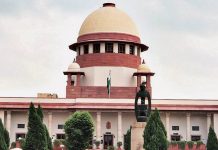This article is written by Abanti Bose, pursuing B.A.LL.B(H) from Amity University Kolkata, India. The objective of this article is to highlight the impetuous depiction of the legal fraternity in Indian Cinema and the article has also added several instances of such inappropriate portrayal of the Indian legal system in the Indian cinema.
Table of Contents
Introduction
Law has always been an intriguing profession. Movies, television shows, and stories have always glamourized this profession by portraying an elaborate courtroom scene with a climax ending. Most often the media has depicted the protagonist winning in the end with intense and heartfelt oratory, keeping the audience at the edge of their seat throughout. The fictional stories presented in the movies and the shows depict a great deal about the political and social situations. This way the media not only entertains the public but also attempts to educate them about the actual prevailing societal conditions. Similarly, Indian media had played an active role in depicting crime and courtroom dramas shedding light on the functioning of the legal fraternity. They have engaged in narratives that have sustained over the years and created iconic films like ‘Damini’, ‘Gangajal’, ‘Pink’, etc. Apart from the movies, there are numerous television shows like ‘CID’, ‘Adalat’, etc which habituated the audience with the police and legal intuitions. Now the question arises whether or not they use the appropriate legal lexicon while depicting the legal fraternity?
As laid down in Article 19(1) of the Indian Constitution that an individual has the freedom to make films for the general public. But this freedom is not absolute as it has the inherent ability to intrude and provoke the mind and feelings of people at large.
There have been various instances where Bollywood has inappropriately or recklessly portrayed legal fraternity in the movies and thereby projected a wrong image about the functioning of the Indian judicial system in the mind of the masses. A filmmaker before making a courtroom movie or legal drama should try and understand the proceedings of the court as much as he can. Although these movies are made for entertainment purposes, the appropriate legal aspects of the legal system that must be kept in mind by the filmmakers while creating such movies that represent the legal fraternity.
Instances of impetuous depiction
There have been various instances where Bollywood has impetuously and rashly projected the legal fraternity in movies just for the sake of entertainment. Mentioned below are examples of the impetuous depiction of the legal fraternity in Indian cinema:
- In the movie, ‘Damini’ one woman fights against powerful men in a court of law to give justice to a rape victim. The courtroom scene and the case was the pivotal part of the movie. In the movie, while the lawyer (Amrish Puri) was arguing and presenting the case before the judge, the witness (Meenakshi Sheshadri) interrupts him by saying that all his claims are false. However in real life before the court, a non-lawyer is not permitted to interrupt a lawyer when he is presenting his case.
Again in a continuation scene, Damini is asked to identify the four rapists by her lawyer, among the group of men whose faces are covered in holi colour, and the lawyer pushes each man upon Damini intending to provoke her. But on the contrary in real life, the process of identification is not conducted in a court and let alone done in such a dramatic way that the witness is visibly intimated in the courtroom.
- In a scene in the movie, ‘Kyon ki Main Jhuth Nahin Bolta’ showed that Govinda while proving before the court that the witness was lying he lights his blazer on fire compelling the witness to confess before the court the truth. In real life, if any lawyer tries to do something of this sort he will not only be held in contempt of court but also this particular act of witness intimidation is punishable under the Indian Penal Code.
A lawyer is expected to follow the procedures laid down in the statutes and is not allowed to do whatever he pleases in order to prove his point before the court.
- In another movie, ‘Meri Jung’ Anil Kapoor drinks a full bottle of medicine to prove that the contents of the bottle were not poisonous. Although he was left without a choice and it was the fastest way to prove his client’s innocence. But in real life, if someone tries that stance before the court he will be held in contempt of court. Again, lawyers are not allowed to drink evidence in the middle of the proceedings to prove their points, they are supposed to follow the procedures laid down in the statutes.
- In the movie, ‘Shahenshah’ Amitabh Bachchan drives an old woman, the only witness of the case, inside the court by breaking down the doors of the courts and making a grand entry. However in real life, if one tries to break down the doors of the court he or she will be held in contempt of court and the Bar Council of India might also cancel their license. No matter how urgent the situation is neither lawyers nor the police officers are authorized to break down the doors of the court in order to make a grand entry.
- Bollywood movies often portrayed the inside of the courtrooms in grandeur. With lavishly polished tables and a big room for lawyers to pace around and present their cases before the court. In real life, although it might be true to some extent in High Courts or the Supreme Court, district court judges or village court judges do not enjoy such luxury.
Effects of the impetuous portrayal of the legal fraternity
Indian cinema plays an active role amongst the masses. It has become a tool through which directors can alter the feelings, mindset, and thought process of the general public. A lot of people outside the legal fraternity have watched movies like ‘Damini’, ‘Kyon Ki Main Jhuth Nahin Bolta’, etc. then reading actual cases or putting minimal efforts to know the legal fraternity. Not only Bollywood but also various television serials have often projected the lawyers in a negative and even showed how reckless and rash decisions they would take while proving their point. In the movies, the professionalism and morality of the lawyers are often portrayed in poor light. Indian cinema shows that a lawyer’s profession has much to do with dishonesty than with facts or evidence. A person not schooled in the adversarial system of justice can easily mistake a lawyer’s conviction to his brief as nothing but a lie since both sides engage lawyers arguing diametrically opposite propositions with the same enthusiasm.
There have also been instances where Indian media portrayed corrupt judges with the intention to uphold reality and depicted how power and money can influence the delivery of justice. But it has also led to malign the reputation and prestige of the legal fraternity in the minds of the people, causing them to lose faith in the Indian judicial system.
The genre of courtroom and crime dramas in Indian cinemas and television shows have widespread vigilante justice and often depicted the use of extra-judicial means to deliver justice. This influences the viewers to support vigilantism and fake encounters by the police authority in real life. Media has actively swayed public opinion, in quantitative analysis, it was found viewers of ‘Simmba’ had greater support for police using vigilantism and fake encounters to catch culprits and a fast way of delivering justice. Hence, glorifying the extra-judicial means in delivering justice and influencing the public to lose trust and faith in judicial proceedings and functioning of the Indian legal system. In Indian cinema, the delineation of the negative role of the police and judicial system had an impact on the minds of the people. Narratives that show hasty and improper judicial proceedings contain low levels of trust and perception of inefficiency.
Analysis: lawyers seek restraint on Netflix’s series ‘Hasmukh’ for maligning legal fraternity
Episode four of Netflix’s series ‘Hasmukh’ has allegedly maligned the reputation of lawyers. And in retaliation, a plea has been filed in Delhi High Court seeking directions to entertainment service provider Netflix to prevent airing the said television series. The plea was filed by advocate Ashutosh Dubey and he contended that in episode four of the series lawyers have been referred to as thieves, scoundrels, goons, and rapists. The petition also said that the show not only demeaned the legal fraternity but also showed the police body, especially Uttar Pradesh police officers and politicians in a very negative light. He further added that the language used in the web series was highly defamatory and disparaging in the portrayal of the legal fraternity. It has also lowered the standard and brought disrepute to the profession in the eyes of the general public. In the plea, he mentioned that such portrayal has caused “utmost damage” to the legal profession and questioned the image and morality of the lawyers in the eyes of the viewers.
Although the show makers have the freedom to express their ideas but Article 19(2) lays down the exceptions to this freedom. The freedom of speech and expression is not absolute because it has the inherent ability to intrude and provoke the mind and feelings of the general public. This clause must be read and incorporated appropriately before making any movies, web series, short films, etc. which has the power to defame an entire profession and influence the general public to form a certain mindset against that particular profession.
Suggestions
When filmmakers make movies portraying the legal fraternity they should use appropriate legal lexicon and suitable depiction of the legal fraternity. Although modern Indian cinema did come a long way in the portrayal of the law profession with movies like ‘Pink’, ‘Mulk’, ‘Jolly L.L.B’, etc. it has a long way to go in upholding this invigorating profession. It should accurately depict the profession without ruining the entertainment purpose because when filmmakers make movies they have the power to influence the masses and such an important tool should be used correctly.
Conclusion
The filmmakers do have the freedom of creating movies as granted by Article 19 (1) of the Indian Constitution but this freedom is not absolute. Article 19 (2) lays down several exceptions to these provisions which are to be kept in mind while creating such movies that depict the profession rashly. In the modern-day cinema with the creation of films like ‘Pink’, ‘Mulk’, ‘Jolly LLB 2’ there has been a lot of progress in the Indian cinema depicting the legal fraternity. Indian cinema plays a crucial role in affecting the mind and feelings of the masses also influences them to change their mindset about certain things. With the creation of movies, wherein the end justice is delivered and the guilty person is convicted, the trust and faith of the general public towards the Indian judiciary and legal system are restored. Such movies tend to have a positive effect on the masses as against those movies where advocates are portrayed as a negative character and the legal system in a crippling condition. And the impetuous and inappropriate depiction of the legal fraternity has time and again raised questions about the legal fraternity.
The purpose of this article was not to prevent Bollywood from making good movies or to reduce the level of the drama in the films, but to upheld how the certain impetuous depiction of the legal fraternity is not appropriate in real life. Filmmakers should be able to create films portraying the suitable legal lexicon for the general public without ruining the level of drama and entertainment. Although there have been a lot of changes in the Indian Cinema with the creation of films such as ‘Pink’, ‘Mulk’, ‘Jolly LLB 2’, etc. still it has to adopt several measures which accurately portray the legal fraternity and add certain changes in the proper portrayal of the legal fraternity. In recent times more and more Indian movies have begun to capture the reality. Authenticity is definitely not an overrated virtue in the context of cinematic language and more so concerning the legal subjects. Bollywood and Indian media can still depict accurate legal scenes and use the appropriate legal lexicon without compromising on the entertainment aspect of the general public.
References
- http://docs.manupatra.in/newsline/articles/Upload/1E18CE70-3C42-4EC5-835F-9B8B75B37B8C.pdf
- https://www.firstpost.com/india/crime-courtroom-drama-in-indian-entertainment-how-the-genre-sways-popular-opinion-on-law-and-judiciary-7905631.html
- https://www.tribuneindia.com/news/archive/features/courtroom-dramas-reel-vs-real-306859
- https://www.thebetterindia.com/135244/indian-cinema-court-lawyers-judges/
LawSikho has created a telegram group for exchanging legal knowledge, referrals and various opportunities. You can click on this link and join:
 Serato DJ Crack 2025Serato DJ PRO Crack
Serato DJ Crack 2025Serato DJ PRO Crack











 Allow notifications
Allow notifications



